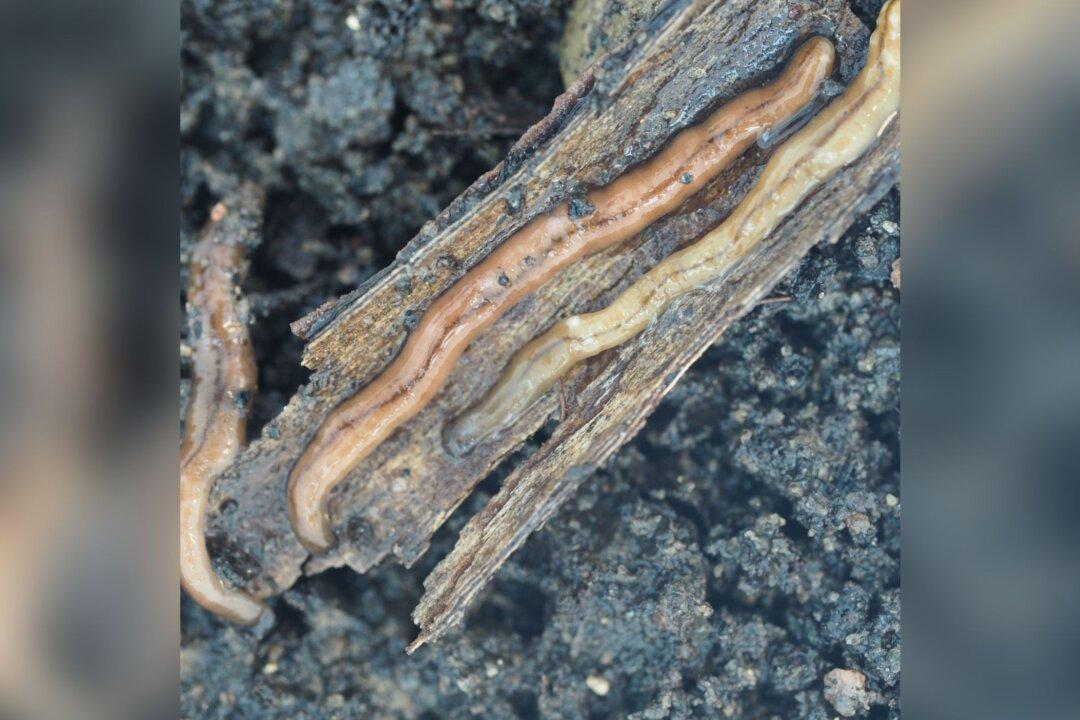A predatory worm that carries a neurotoxin has been recently spotted in the Toronto area.
Dubbed the hammerhead flatworm or Bipalium adventitium, there have been sightings of it reported near
Hamilton on March 30 and
Newmarket on March 8, according to iNaturalist.ca, a self-described Canada-wide citizen science wildlife reporting platform. The platform allows people to post photos of creatures, such as the hammerhead flatworm, that they spot in their backyard or nearby parks.
Bipalium adventitium was first discovered in Canada in a neighbourhood of Montreal in 2018, according to an
article in Zootaxa, a journal for animal taxonomists.
“The hammerhead flatworms (subfamily Bipaliinae) are spectacular, by their large size, up to one meter, their distinctive colours, and the typical shape of their head which makes them easy to identify,” authors Jean-Lou Justine, Thomas Thery, Delphine Gey, and Leigh Winsor wrote.
Hammerheads can be recognized by their head, which is flat, like a hammerhead shark.
“The species actively tracks its prey, follows trails of earthworm mucus, and can capture earthworms in their tunnels,” the article said. “It can prey on earthworms 55 times larger than itself in mass.”
The worm reproduces by laying egg capsules that take about 23 days to hatch. These eggs contain up to eight young, the authors said.
It’s considered an invasive species as it’s not native to the area and presents a threat to the local ecosystem.
The Epoch Times attempted to reach the Invasive Species Centre in Ontario but did not hear back by publication time.
Hammerhead flatworms produce the same toxin as pufferfish, Université de Montréal entomologist Étienne Normandin said, adding it can harm children.
“If a young child puts soil in his mouth and ingests a flatworm or two or more, there’s a real risk of damage. If ingested, it’s a toxin that will first attack the perioral region — the face, the tongue and everything in the esophagus,” he told The Canadian Press. “In such a case, the child needs to be hospitalized very quickly.” The worms can also pose a danger to birds, dogs, and other animals, as well as the soil.
Bipalium adventitium prey on slugs, snails, and millipedes, which have an important role in recycling organic matter in the environment, Mr. Normandin said. Its presence can change the ecosystem balance.
“In France, this type of worm has had a negative impact on soil invertebrate communities. We’re slowly seeing the long-term effects of this, so we can expect similar damage to our soil fauna over the years,” he added.
According to the Zootaxa article, the discovery in Montreal is the farthest north the worm has been recorded.
“The finding in Montréal is probably the Northernmost record of B. adventitium in North America, and our observations over two years show that the species can survive winter in Québec.”
The worms are originally from Asia and Madagascar, according to a February 2022
article in the Journal of Conservation Biogeography.
Hammerhead flatworm species do well in humid environments, according to the article.







